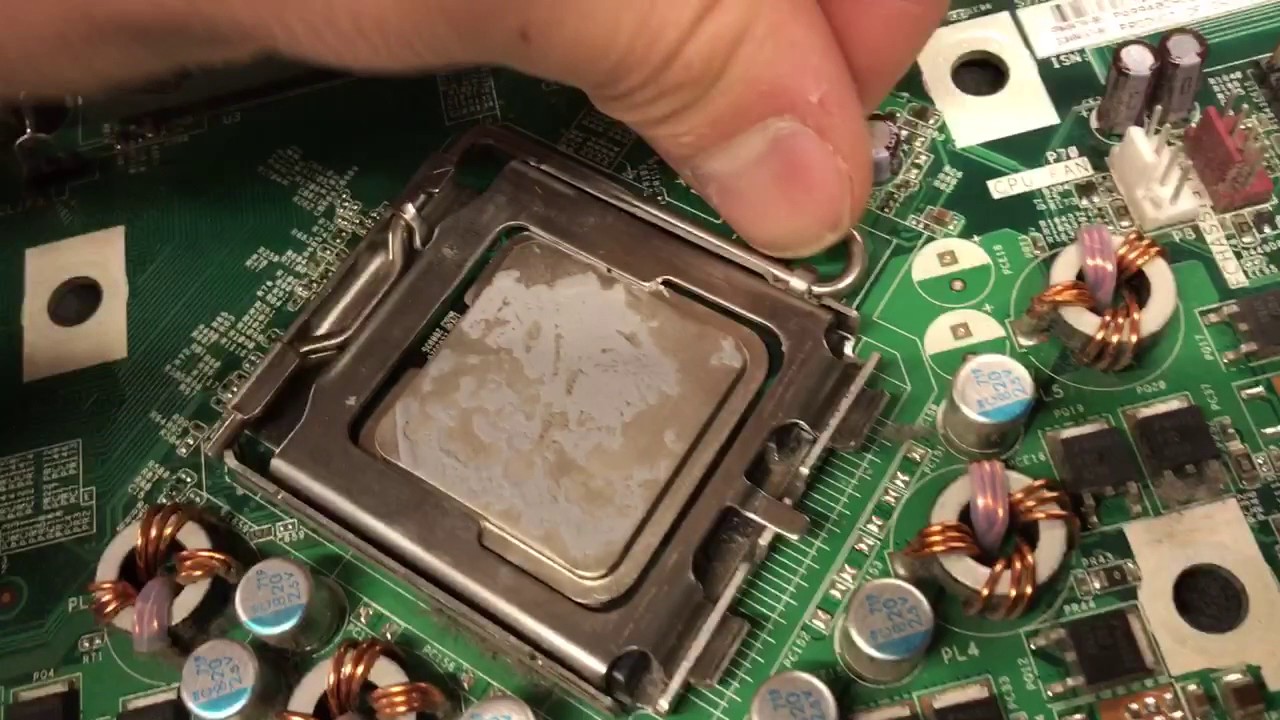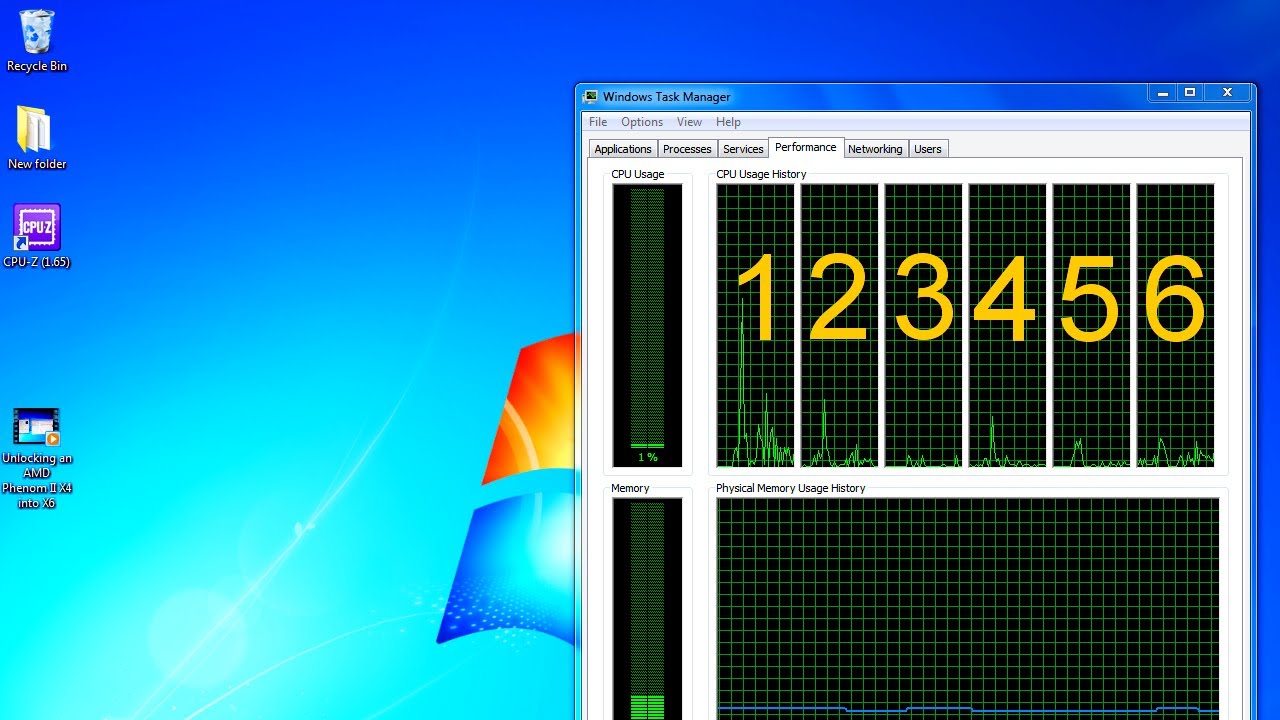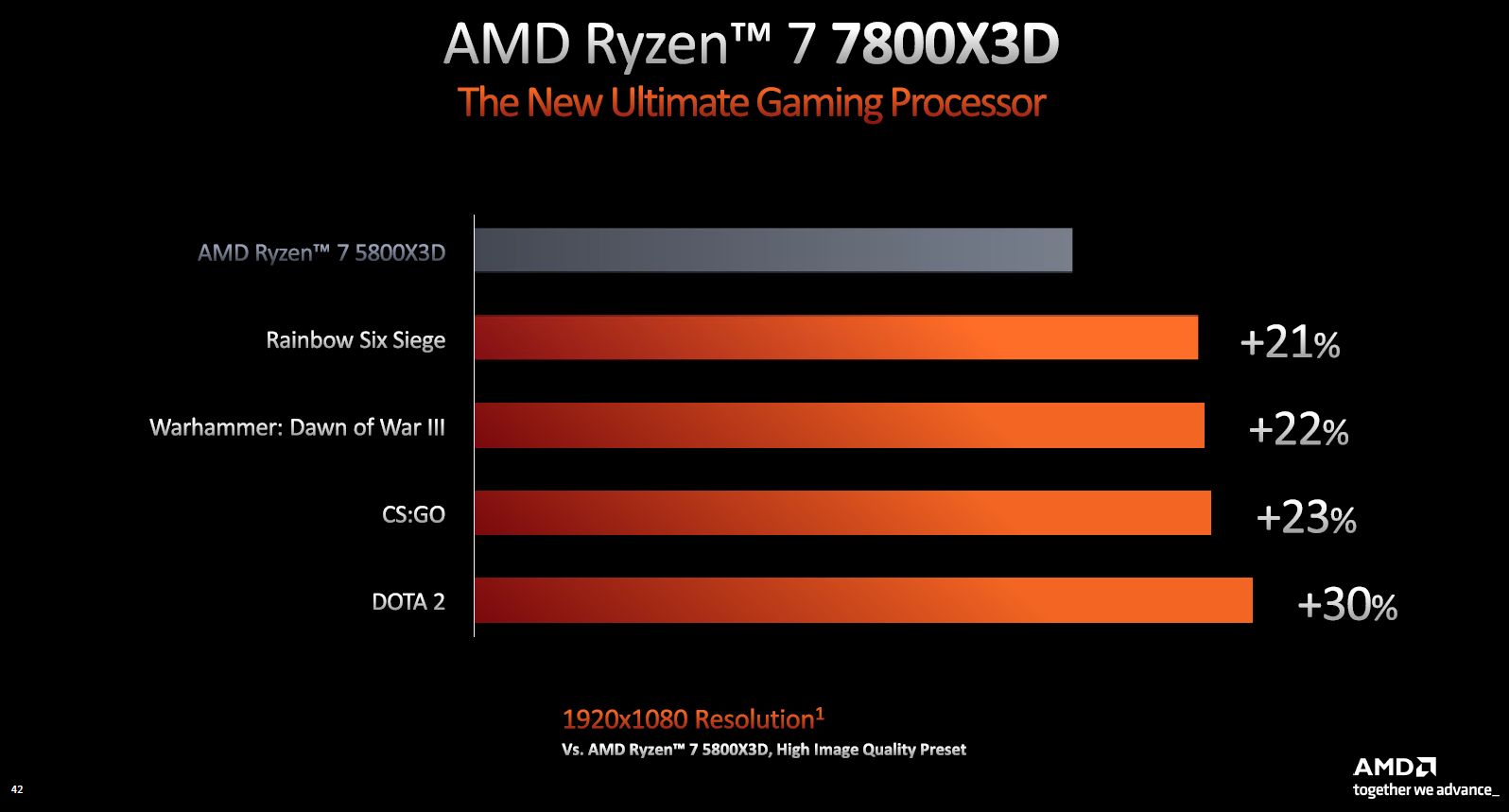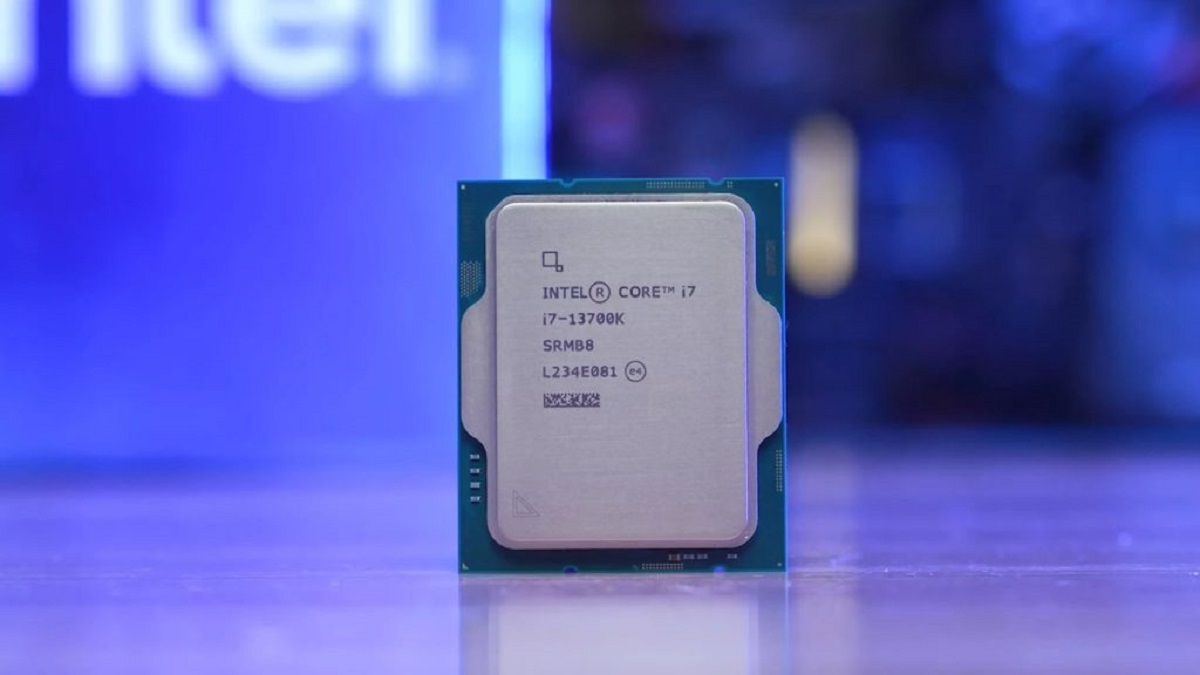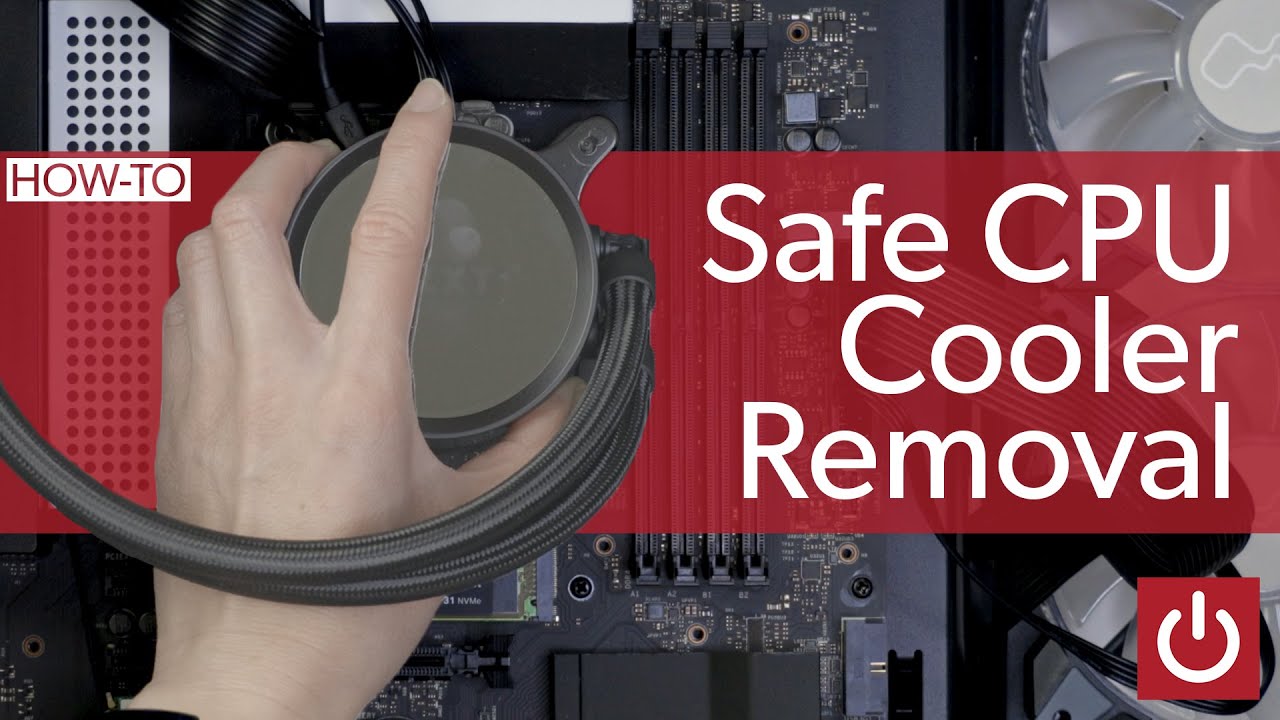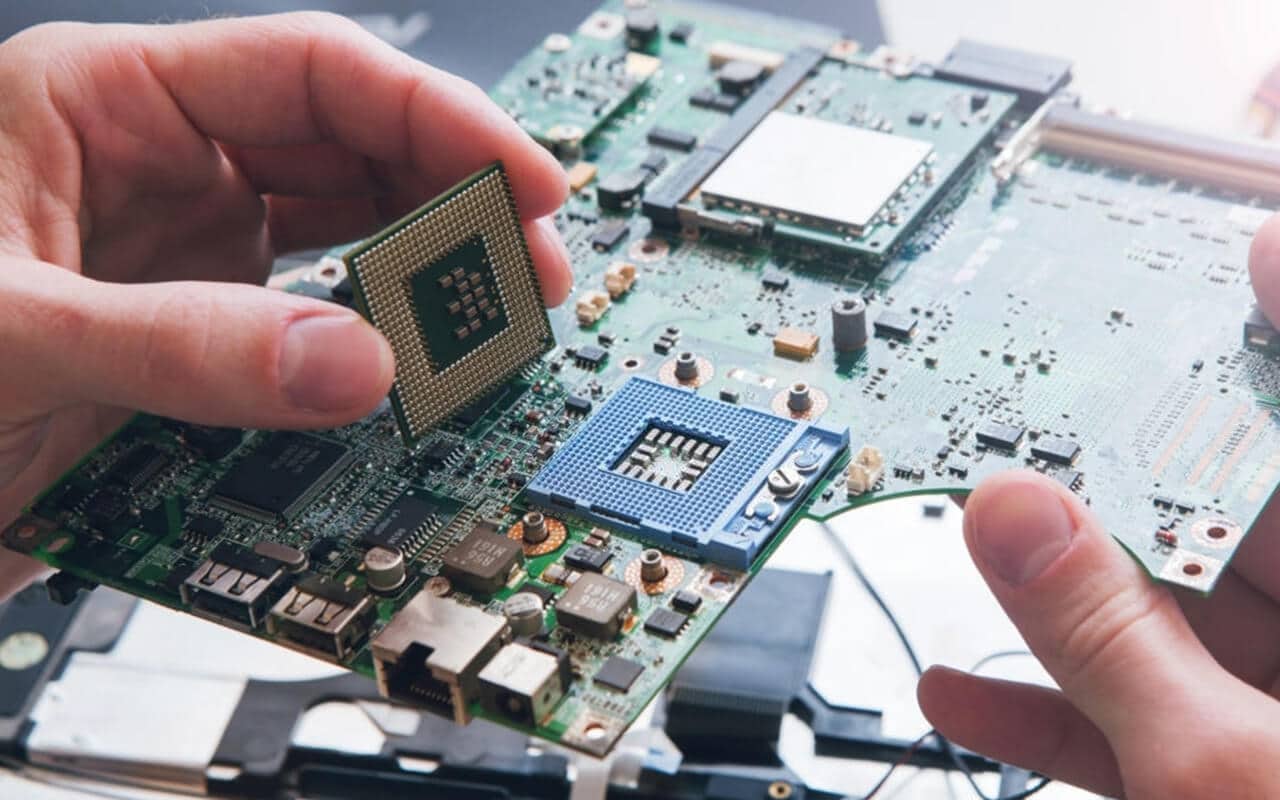Introduction
Unlocking a CPU is a process that can provide computer enthusiasts and overclockers with the ability to push their hardware to its limits. CPUs, or Central Processing Units, are the brains of our computers, responsible for executing instructions and running programs. However, manufacturers often lock certain features and settings to maintain stability and prevent damage.
But what does it mean to unlock a CPU? Essentially, it involves removing or bypassing the restrictions that manufacturers have put in place, giving users greater control over the CPU’s settings and performance. By unlocking a CPU, users can potentially achieve higher clock speeds, increased core counts, and more advanced features.
Understanding CPU locking is essential before attempting to unlock one. Manufacturers lock CPUs for various reasons, including ensuring reliability, controlling power consumption, and differentiating between product models. While unlocking a CPU may offer benefits in terms of performance, it also carries certain risks, including potential damage to the hardware and voiding of warranties.
In this article, we will explore the reasons for unlocking a CPU, how to check if a CPU is locked, the tools and software available for unlocking, and a step-by-step guide on how to unlock a CPU safely. It is important to note that unlocking a CPU should only be attempted by experienced users who understand the risks involved and have adequate knowledge about the specific CPU model they are working with.
So, if you’re ready to dive into the world of CPU unlocking and harness the full potential of your hardware, let’s get started!
What does it mean to unlock a CPU?
Unlocking a CPU refers to the process of removing or bypassing the limitations imposed by the manufacturer on the CPU’s performance and settings. When a CPU is locked, certain features and settings are restricted, preventing users from making adjustments that go beyond the manufacturer’s specifications.
By unlocking a CPU, users gain greater control over its clock speeds, core counts, and voltage settings, allowing for potential performance improvements. This process is particularly popular among computer enthusiasts, gamers, and overclockers who want to push their hardware to its maximum capabilities.
One of the common ways that manufacturers lock CPUs is through the use of a locked multiplier. The CPU multiplier determines the clock speed by multiplying it with the base clock frequency. Unlocking the multiplier enables users to freely adjust the clock speed, providing the ability to achieve higher performance levels.
Another aspect of CPU unlocking is the ability to enable disabled CPU cores. Some CPUs come with multiple cores, but manufacturers may disable some of them to differentiate between different product models or to improve yield rates during the manufacturing process. By unlocking these disabled cores, users can effectively increase the CPU’s core count, potentially leading to improved multitasking and performance in multi-threaded applications.
Furthermore, unlocking a CPU may also involve accessing and modifying advanced settings like voltage and power limits. Altering these settings allows users to optimize power consumption and thermal management for their specific needs, potentially leading to better performance and efficiency.
It is important to note that not all CPUs can be unlocked. Some CPUs are permanently locked by the manufacturer, and attempting to unlock them may void warranties or cause irreversible damage. Therefore, before embarking on the CPU unlocking process, it is crucial to research and ensure that the specific CPU model supports unlocking and that you have a clear understanding of the risks involved.
In the following sections, we will delve deeper into the concept of CPU locking, explore the reasons for unlocking a CPU, and provide guidance on how to proceed with caution to unlock a CPU safely.
Understanding CPU locking
CPU locking is a mechanism employed by manufacturers to restrict access to certain features and settings on a CPU. This restriction is put in place for various reasons, including maintaining stability, controlling power consumption, differentiating between product models, and even preventing potential damage to the processor.
One of the primary methods used for CPU locking is the implementation of a locked multiplier. The multiplier is a key component in determining the CPU’s clock speed. When the multiplier is locked, users are unable to change the clock speed directly. This limitation is often set to ensure stability and prevent users from pushing the CPU beyond its recommended limits, which could result in system instability or damage.
In addition to the locked multiplier, CPU locking can also involve disabling certain CPU cores. Manufacturers may disable cores on a CPU to create product differentiation across a product line or to improve yield rates during manufacturing. By selectively disabling cores, they can offer different models with varying core counts and price points. However, this means that some CPUs sold with fewer cores may have disabled cores that technically exist on the chip. Unlocking the CPU allows users to re-enable these disabled cores, effectively increasing the CPU’s core count and potentially improving performance in multi-threaded applications.
CPU locking can also extend to advanced settings such as voltage and power limits. Manufacturers often set default voltage and power limits to ensure stability and protect the longevity of the CPU. Modifying these settings without proper knowledge can lead to overheating or even permanent damage. Unlocking the CPU provides users with access to these settings, allowing for fine-tuning and optimization of power consumption, thermal management, and overall performance.
It’s worth noting that CPU locking is a deliberate design choice made by manufacturers to strike a balance between performance, stability, and product differentiation. While unlocking a CPU can offer benefits in terms of increased performance and customization, it also comes with certain risks. Users should be aware that attempting to unlock a CPU can void warranties, reduce system stability, and potentially lead to irreversible damage if not done correctly.
Next, we will explore the reasons why individuals may choose to unlock their CPUs and push their hardware to its limits.
Reasons for unlocking a CPU
Unlocking a CPU can offer several benefits for users who are looking to maximize the performance and customization of their computer systems. While CPU unlocking is most commonly associated with computer enthusiasts and overclockers, there are various reasons why individuals may choose to unlock their CPUs.
1. Increased performance: Unlocking a CPU allows users to have greater control over clock speeds, voltages, and core counts. By adjusting these settings, users can potentially achieve higher performance levels, especially in tasks that require intensive processing power, such as gaming, video editing, or 3D rendering. This can result in faster application loading times, smoother multitasking, and improved overall system responsiveness.
2. Optimized multitasking: Certain applications, such as video editing software or virtualization software, benefit from higher core counts. By unlocking a CPU and enabling disabled cores, users can effectively increase the number of available cores, allowing for better multitasking capabilities and improved performance in multi-threaded applications.
3. Customization and experimentation: CPU unlocking gives users the ability to experiment with different settings and configurations to find the ideal balance between performance and stability. This can be particularly appealing for computer enthusiasts who enjoy tinkering with their hardware and pushing it to its limits. Unlocking a CPU provides a playground for exploring different overclocking techniques and squeezing out every ounce of performance from the processor.
4. Value for money: In some cases, CPUs that are one model below a higher-priced variant have identical hardware, but certain features or settings are locked. Unlocking such a CPU effectively turns it into a higher-priced model, providing users with a cost-effective way to obtain similar performance without breaking the bank.
5. Learning experience: For those interested in understanding the inner workings of CPUs and computer hardware, unlocking a CPU can serve as a valuable learning opportunity. It allows individuals to gain hands-on experience with important concepts such as clock speeds, voltage settings, and core management, fostering a deeper understanding of the hardware and software interactions that drive computer systems.
While the reasons for unlocking a CPU are diverse, it’s essential to approach the process with caution and a thorough understanding of the risks involved. In the next section, we will explore how to check if a CPU is locked before attempting to unlock it.
Checking if a CPU is locked
Before embarking on the CPU unlocking process, it’s essential to determine whether your CPU is locked or not. While there are different ways to check if a CPU is locked, a few simple steps can help you identify whether you have the potential to unlock additional performance.
1. Research: The first step is to research the specific model of your CPU. Check the manufacturer’s specifications and documentation to see if any limitations or locking mechanisms are mentioned. This information will help you understand the capabilities and constraints of your CPU.
2. Multiplier lock: CPU manufacturers often implement a locked multiplier to restrict overclocking and adjusting the clock speed. To check if your CPU has a locked multiplier, check the BIOS or UEFI settings of your motherboard. If the option to modify the multiplier is disabled or grayed out, it’s an indication that the CPU may be locked in terms of clock speed adjustments.
3. Core count lock: To determine if your CPU has disabled cores that can be unlocked, you can use CPU monitoring software. These programs provide detailed information about your CPU, including the number of cores it has. If the software shows fewer cores than what your CPU model should have, it suggests that some cores have been deliberately disabled.
4. Manufacturer tools: Some CPU manufacturers provide software tools that allow users to check if specific features are locked and potentially enable them. These tools can be found on the manufacturer’s website and are designed to work with their specific CPU models.
5. Online forums and communities: Engaging with online communities and forums dedicated to computer hardware enthusiasts can provide valuable insights and experiences. Check if others have successfully unlocked the same CPU model you have or if there are any known limitations or risks associated with the unlocking process.
By following these steps and gathering information from multiple sources, you can get a better understanding of whether your CPU is locked and which specific features or settings may be restricted. It is important to remember that unlocking a CPU is not guaranteed for every model, and attempting to unlock a CPU can carry certain risks, as mentioned earlier in this article. Therefore, proceed with caution and ensure you have a thorough understanding of the CPU model, its limitations, and the potential consequences before attempting any unlocking procedures.
Now that we have discussed how to check if a CPU is locked, in the next section, we will explore the tools and software that can be used for unlocking a CPU.
Tools and software for unlocking a CPU
Unlocking a CPU requires the use of specific tools and software that are designed to bypass the locked features and provide users with greater control over their hardware. Here are some common tools and software options that can help in the CPU unlocking process:
1. BIOS/UEFI: The BIOS (Basic Input/Output System) or UEFI (Unified Extensible Firmware Interface) is the firmware interface present on the motherboard. Many CPU unlocking options can be accessed and modified through the BIOS or UEFI settings. These settings allow users to adjust clock speeds, enable/disable CPU cores, and modify voltage and power limits. It is essential to consult the motherboard’s manual and ensure you have a good understanding of the specific settings and options available in your BIOS or UEFI interface.
2. Overclocking software: There are several third-party software programs specifically designed for overclocking CPUs. These software tools provide a user-friendly interface that allows users to modify CPU settings, including clock speed, voltage, and power limits, without having to access the BIOS or UEFI settings. Popular overclocking software options include MSI Afterburner, Intel XTU (Extreme Tuning Utility), and AMD Ryzen Master.
3. CPU-specific tools: Some CPU manufacturers provide their own software tools that are designed specifically for their CPUs. These tools often offer advanced features and options for unlocking and enhancing performance. For example, AMD provides the AMD Overdrive utility, which allows users to adjust various CPU settings, including core clock speeds, voltage, and power limits, for optimal performance.
4. Community-developed tools: In addition to official software options, there are community-developed tools and utilities created by CPU enthusiasts and overclockers. These tools are often tailored to specific CPU models or architectures, providing additional options and features not available in standard software. These tools can be found through online communities, forums, or dedicated websites that cater to CPU unlocking and overclocking.
When using any of these tools or software options for unlocking a CPU, it is crucial to proceed with caution. Unlocking a CPU involves making adjustments that go beyond the manufacturer’s intended specifications and can potentially lead to system instability or damage if not done correctly. It is recommended to research and follow guides or tutorials specific to your CPU model, and to take incremental steps when making adjustments, testing stability and monitoring temperatures throughout the process.
Now let’s move on to the next section, where we will provide a step-by-step guide on how to safely unlock a CPU.
Step-by-step guide to unlocking a CPU
Unlocking a CPU requires careful consideration and precision to ensure a successful and safe process. Here is a step-by-step guide to help you unlock your CPU:
1. Research and preparation: Begin by researching your CPU model, including its specifications, potential locking mechanisms, and any risks associated with unlocking. Familiarize yourself with the tools and software options available for unlocking your specific CPU.
2. Backup your data: Before undertaking any CPU unlocking procedures, it is essential to back up your data. While unlocking a CPU should not impact your data directly, there is always a possibility of system instability or unexpected failures, so it is better to be safe and have a backup of your important files.
3. Check BIOS/UEFI settings: Enter your motherboard’s BIOS or UEFI settings by restarting your computer and pressing the designated key during startup (usually Del, F2, or F10). Look for options related to CPU settings, including clock speeds, core count, voltage, and power limits. Take note of any locked or restricted options.
4. Adjust clock speed and voltage: If your CPU has a locked multiplier, you can attempt to modify the base clock frequency to increase the overall clock speed. However, be cautious as this may also affect other components such as RAM and storage devices. Adjust voltage levels gradually, testing for system stability after each adjustment. Monitor temperatures to prevent overheating.
5. Enable disabled CPU cores: If your CPU has disabled cores, look for an option in the BIOS/UEFI settings to enable them. Remember that not all CPUs have unlockable cores, so ensure that your CPU model supports this feature. Enable the cores one at a time, testing for stability after each core is enabled.
6. Use overclocking software: If adjusting settings through the BIOS/UEFI is limited or not available, consider using overclocking software designed for your CPU. These tools provide a user-friendly interface to modify clock speeds, voltages, and core counts without accessing the BIOS/UEFI settings. Follow the software’s instructions and recommendations for safe overclocking.
7. Test for stability: After each adjustment, stress-test your system to check for stability. Use software tools like Prime95 or CPU-Z to put your CPU under heavy load and monitor for any crashes, errors, or abnormal temperatures. Run stability tests for an extended period to ensure long-term stability.
8. Monitor temperature and power consumption: Throughout the unlocking process, closely monitor your CPU’s temperature and power consumption. It is important to keep temperatures within safe limits to prevent thermal throttling or damage to your CPU. Ensure that your cooling solution is adequate for the increased performance you are aiming for.
9. Tweak and fine-tune: The unlocking process may require multiple iterations of adjusting settings and testing for stability. Fine-tune your CPU’s settings gradually, taking note of any improvements or issues along the way. Proceed with caution and do not push your CPU beyond its safe limits.
Remember that unlocking a CPU comes with risks, including potential system instability or damage. If you encounter any issues or instability during the process, revert to the default settings or seek guidance from online communities or experts who have experience with your specific CPU model.
By following these steps and taking necessary precautions, you can unlock your CPU and potentially achieve higher performance levels. However, always prioritize the safety and stability of your system while experimenting with unlocking your CPU.
Now that you have a guide to unlocking a CPU, let’s move on to the next section, where we will discuss the precautions and risks involved in the CPU unlocking process.
Precautions and risks involved
Unlocking a CPU can offer greater performance and customization, but it is important to be aware of the precautions and risks involved throughout the process. Here are some key precautions to take and risks to consider when unlocking a CPU:
1. Voiding warranties: Unlocking a CPU usually involves making modifications that go beyond the manufacturer’s recommended specifications. As a result, it may void warranties provided by the CPU manufacturer or the system builder. Make sure to check the terms of your warranty before proceeding.
2. Potential system instability: Unlocking a CPU can lead to system instability if not done correctly or if the CPU is pushed beyond its safe limits. Unstable systems may experience crashes, freezes, or unexpected reboots. It is crucial to stress-test your system after each adjustment and monitor for stability issues.
3. Thermal concerns: Overclocking or unlocking a CPU can lead to increased heat generation. It is important to have adequate cooling solutions in place to prevent overheating. Monitor your CPU temperature closely during stress tests and ensure that it stays within safe limits to avoid performance degradation or damage to the CPU.
4. Potential for damage: Incorrect manipulation of settings or excessive voltage can cause permanent damage to the CPU or other components in your system. It is vital to proceed with caution, make incremental adjustments, and monitor the system closely for any signs of instability or abnormal behavior.
5. Limited success: Not all CPUs can be unlocked, and the degree to which they can be unlocked may vary. Some CPUs may have certain features permanently disabled, preventing users from unlocking them. Research your CPU model thoroughly to determine if it is possible to unlock it.
6. Compatibility issues: CPU unlocking may impact the compatibility of other system components. Overclocking or unlocking a CPU can, in some cases, affect the stability or performance of other hardware components such as RAM or storage devices. It is important to test the system for compatibility and stability after each adjustment.
7. Data loss and backups: While unlocking a CPU should not directly impact your data, there is always a possibility of data loss due to system instability, crashes, or other unforeseen issues. It is crucial to back up your important data before undertaking any CPU unlocking procedures.
To mitigate these risks and ensure a successful CPU unlocking process, it is strongly recommended to thoroughly research your CPU model, seek guidance from experienced individuals or online communities, and follow established overclocking and unlocking best practices. Incremental adjustments, stress testing, and monitoring temperatures are critical steps to prevent damage and achieve stability.
Lastly, if you are uncomfortable or inexperienced with the process of unlocking a CPU, it is advisable to seek assistance from a professional or an experienced individual who can guide you through the process safely.
Now that we have discussed the precautions and risks involved in unlocking a CPU, let’s move on to the concluding section.
Conclusion
Unlocking a CPU can be an exciting endeavor for computer enthusiasts and overclockers, providing the opportunity to push hardware to its maximum potential. By removing or bypassing limitations set by manufacturers, users gain greater control over clock speeds, core counts, and voltage settings, potentially leading to improved performance and customization.
However, it is crucial to approach CPU unlocking with caution and thorough research. Understanding the locking mechanisms, limitations, and risks associated with unlocking your specific CPU model is imperative. Taking necessary precautions, such as backing up data, monitoring temperatures, stress testing, and proceeding incrementally, can help minimize the risks and enhance the chances of a successful unlocking process.
Throughout this article, we discussed the meaning of CPU unlocking, understanding CPU locking, reasons for unlocking a CPU, how to check if a CPU is locked, tools and software for unlocking, a step-by-step guide to unlocking a CPU, and the precautions and risks involved.
It is important to remember that unlocking a CPU carries inherent risks, including potential system instability, voiding warranties, increased temperatures, and the potential for irreversible damage. It is crucial to assess the benefits against these risks and make an informed decision based on your comfort level and understanding.
Ultimately, unlocking a CPU can be a rewarding experience for those seeking higher performance, customization, and a deeper understanding of their computer hardware. Through careful research, cautious experimentation, and adherence to best practices, it is possible to unlock a CPU and extract every ounce of performance it has to offer.
Whether you choose to embark on the journey of unlocking your CPU or not, the knowledge gained about the inner workings of CPUs and the potential for optimizing performance can be valuable in itself.
Now that you have a comprehensive understanding of CPU unlocking, it’s time to explore the possibilities and make informed decisions that align with your goals and requirements.









